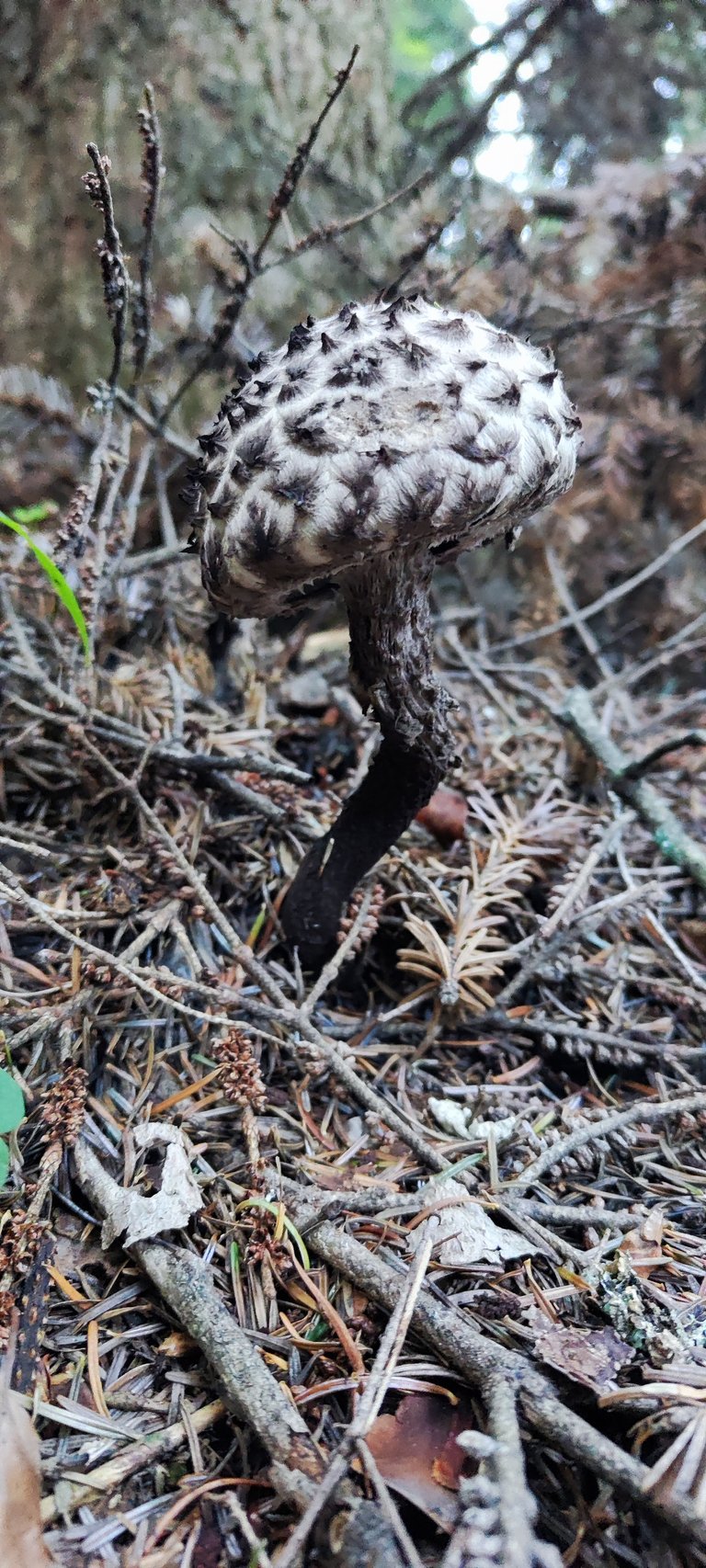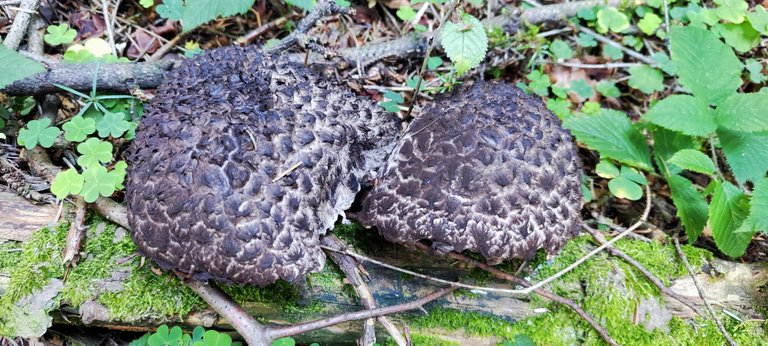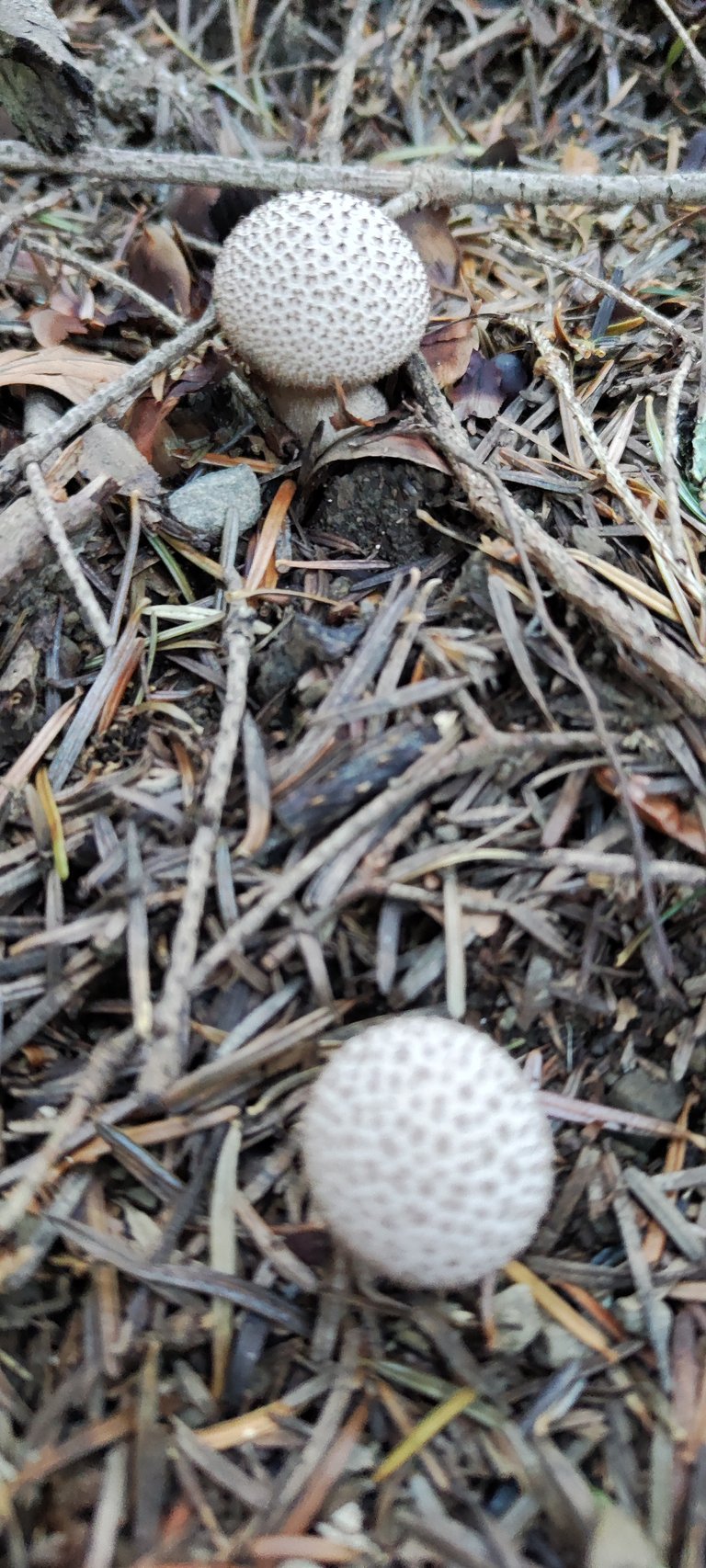Fungi friday.
W końcu trochę wolnego czasu i spacer po lesie w poszukiwaniu grzybów. Jesień wciąż u nas jest piękna więc spaceruje się bardzo przyjemnie. Najlepiej, jakby taka pogada się utrzymała do grudnia, w grudniu śnieg na święta i od stycznia początek lata 😉. W dzisiejszą podróż wybrałem się moje ulubione rodzinne strony - "gór niskopiennych". Spaceruje się wygodnie, więc można zrobić sporo kilometrów, a przy okazji wyciszyć umysł od miejskiego zgiełku i pędzącego tempa. Nie udało mi się uzbierać zbyt wielu sztuk, ponieważ jest trochę za ciepło, albo nie trafiłem na odpowiednią porę. Jednakże udało mi się wykonać kilka fajnych ujęć.
Szyszkowiec Strobilomyces strobilaceus - jest to grzyb z rodziny borowikowatych. Po raz pierwszy został nazwany w 1770 roku.
Kapelusz - średnica kapelusza dochodzi do 15cm jest raczej półkolisty, pokryty jest łuskami w kolorze czarnym. Pod kapeluszem znajduje się pierścień.
Trzon - grubość między 1 a 3cm, rosną do ok 15 - 20cm, są cylindryczne i lekko zwężające się w kierunku kapelusza, twardy. Barwa jego jest podobna do barwy kapelusza.
Miąższ - Przeważnie suchy, w kapeluszu mięsisty, w trzonie twardy, zdrętwiały. Bardzo słaby smak i zapach.
Występowanie - głównie występuje w Ameryce Północnej i Europie, ale również w Japonii i Afryce Zachodniej. Dawniej w Polsce podlegał ochronie ścisłej. W opracowaniu Czerwona lista roślin i grzybów w Polsce jest zaliczany do kategorii grzybów rzadkich. Rośnie we wszystkich gatunkach lasów, czyli w liściastych, iglastych i mieszanych. W Polsce jest trudno spotykany, a więc musiałem mieć szczęście, że udało mi się go spotkać. Przeważnie występuje w górzystych rejonach Polski.
ENGLISH
Finally some free time and a walk in the woods in search of mushrooms. Autumn is still beautiful with us so you walk very pleasantly. It's best if such a talk lasts until December, in December snow for the holidays and from January the beginning of summer 😉. On today's trip I went to my favorite family sites - "low mountains". It walks comfortably, so you can do a lot of kilometers, and at the same time calm your mind from the hustle and bustle of the city and rushing pace. Didn't get to pick up too many because it's a little too warm, or I missed the right time. However, I was able to take some cool shots.
Strobilomyces strobilaceus - this is a fungus from the boletus family. It was first named in 1770.
Hat - the diameter of the hat reaches 15cm is rather semicircular, it is covered with scales in black. There is a ring under the hat.
Leg - thickness between 1 and 3cm, grow to about 15 - 20cm, are cylindrical and slightly tapering towards the hat, hard. Its color is similar to the color of a hat.
Flesh - Mostly dry, fleshy in the hat, hard in the stem, numb. Very poor taste and smell.
Availment - mainly occurs in North America and Europe, but also in Japan and West Africa. Formerly in Poland it was subject to strict protection. In the study, the Red List of Plants and Fungi in Poland is included in the category of rare fungi. It grows in all species of forests, i.e. in deciduous, coniferous and mixed. In Poland it is difficult to meet, so I had to be lucky that I managed to meet him. It is mostly found in the mountainous regions of Poland.







Purchawka chropowata Lycoperdon perlatum - jest to grzyb należący do rodziny purchawkowatych. Pierwszy raz nazwany w 1887 roku.
Kapelusz i trzon są połączone. Osiąga wysokość od 3 do 8 cm, a jego średnica to od 2 do 5 cm.
Kształt ma gruszkowaty lub inaczej maczugowaty o zaokrąglonym wierzchołku.
Góra grzyba jest pokryta jest kolcami, które łatwo się łamią. Początkowo cały owocnik jest biały, natomiast wraz z wiekiem ciemnieje.
W dojrzałym grzybie całe jego wnętrze zamienia się jednego dużego owocnika.
Na górze kapelusza grzyb pęka i przez powstały otwór uwalniają się zarodniki pod wpływem wiatru lub dotyku zwierząt i ludzi.
Jeden pojedynczy podmuch wiatru może uwolnić nawet milion zarodników.
Dolną część grzyba stanowi podglebie. Początkowo jest całe białe, a wraz z dojrzewaniem ciemnieje.
Środek dojrzałego grzyba ma kolor zielony.
Występowanie - niemal na całej kuli ziemskiej, stwierdzono jego występowanie nawet na Grenlandii i Islandii.
W Polsce jest gatunkiem bardzo pospolitym.
Rośnie w lasach, zaroślach na pastwiskach, na spróchniałych pniach.
Jest to grzyb jadalny. Do jedzenia nadają się tylko młode owocniki, których wnętrze jest jeszcze białe i elastyczne. Nadaje się do spożycia w stanie świeżym, może też być suszony. Purchawka chropowata jest mało aromatyczna, jednak bardzo smaczna. Podobno, osobiście nigdy tego grzyba nie jadłem. Nadaje się jako dodatek do potraw gotowanych, najlepiej jednak smakuje pokrojona w plasterki i usmażona.
Jest też źródłem białka, węglowodanów, tłuszczów i mikroelementów.
Badania wskazują, że purchawka ma właściwości oczyszczające glebę z metali ciężkich, a także ma właściwości oczyszczające wodę z rtęci.
ENGLISH
Lycoperdon perlatum - this is a fungus belonging to the puffball family. First named in 1887.
Hat and leg are connected. It reaches a height of 3 to 8 cm, and its diameter is 2 to 5 cm.
Its shape is pear-shaped or otherwise mace-like with a rounded top.
The top of the mushroom is covered with spines that break easily. Initially the entire fruiting body is white, but it darkens with age.
In a mature mushroom, the entire interior of the mushroom turns into one large fruiting body.
At the top of the cap, the mushroom cracks and spores are released through the resulting hole when exposed to the wind or the touch of animals and people.
One single gust of wind can release up to a million spores.
The lower part of the fungus is the subsoil. Initially it is all white, and darkens as it matures.
The center of the mature mushroom is green.
Existence - almost all over the globe, it has been found even in Greenland and Iceland.
In Poland it is a very common species.
It grows in forests, thickets in pastures, on decayed trunks.
It is an edible mushroom. Only young fruiting bodies, the inside of which is still white and flexible, are suitable for eating. It is suitable for consumption fresh, and can also be dried. The rough couplet is not very aromatic, but it is very tasty. Apparently, personally I have never eaten this mushroom. It is suitable as an addition to cooked dishes, but tastes best sliced and fried.
It is also a source of protein, carbohydrates, fats and micronutrients.
Studies indicate that the puffball has properties that cleanse the soil of heavy metals, and also has properties that cleanse water of mercury.




My contribution to #FungiFriday by @ewkaw
What the, these are all pretty and unique kind of mushroom, it a first for me, first time seeing this kind of mushroom w(°o°)w
@ruffatotmeee thank you🖐️:)
Source of potential text plagiarism 1
Source of potential text plagiarism 2
Plagiarism is the copying & pasting of others' work without giving credit to the original author or artist. Plagiarized posts are considered fraud.
Fraud is discouraged by the community and may result in the account being Blacklisted.
Guide: Why and How People Abuse and Plagiarise
If you believe this comment is in error, please contact us in #appeals in Discord.
Very cool mushrooms! I'm far from being an expert on them and would probably pick the poisonous ones!
haha then you better just watch them! Thanks!